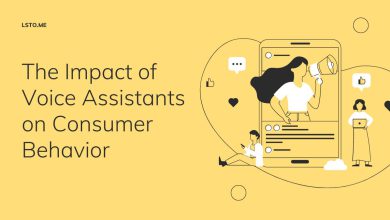
Headlines are the first thing your audience sees. This is true whether they are searching, scrolling social media, or checking email. A great headline can grab attention and spark curiosity. It can entice readers to click on your content. In today’s digital world, where info is abundant, good headlines are key to driving traffic to your website. In this blog post, we’ll explore the key elements of a compelling headline, strategies to craft attention-grabbing headlines, and tips to ensure your headlines are optimized for both readers and search engines.
The Importance of a Compelling Headline
A headline is more than just a title; it is a powerful tool that can determine the success or failure of your content. According to research, 80% of people will read a headline, but only 20% will go on to read the rest of the content. This stat shows the need for headlines that grab attention and get clicks.
Why Headlines Matter
- First Impressions: Your headline is often the first interaction a potential reader has with your content. A strong headline makes a good first impression. It encourages readers to explore further.
- Click-Through Rates (CTR): Headlines directly impact your click-through rates. A strong headline can boost link clicks. This leads to more traffic and engagement.
- SEO: Well-crafted headlines can improve your search engine rankings. By incorporating relevant keywords into your headlines, you can increase your content’s visibility in search results.
- Social Sharing: Headlines that evoke emotion or curiosity are more likely to be shared on social media, extending the reach of your content and driving even more traffic.
Key Elements of a Compelling Headline
To write a compelling headline, you need to understand the elements that make a headline stand out. Here are some key components to consider:
1. Clarity
A compelling headline is clear and concise. It should communicate the essence of your content in a way that is easy to understand. Avoid using jargon or overly complex language that might confuse your audience. Instead, focus on delivering a straightforward message that tells readers exactly what they can expect.
Example:
- Unclear: “Improve Your Online Presence”
- Clear: “10 Proven Strategies to Boost Your Website Traffic by 200%”
2. Relevance
Your headline should be relevant to your target audience. It should address their needs, interests, or pain points. By understanding what your audience is looking for, you can craft headlines that resonate with them and compel them to click.
Example:
- Irrelevant: “Tips for Social Media Marketing”
- Relevant: “How Small Businesses Can Leverage Social Media to Increase Sales”
3. Curiosity
Curiosity is a powerful motivator. A headline that piques curiosity encourages readers to click to learn more. To spark curiosity, use open-ended questions or intriguing statements. You could also hint at valuable information.
Example:
- Curiosity-driven: “The Secret to Doubling Your Blog Traffic in 30 Days”
4. Urgency
Urgency creates a sense of immediacy, encouraging readers to act quickly. Phrases like “limited time,” “don’t miss out,” or “before it’s too late” can convey urgency and prompt clicks.
Example:
- Urgency: “5 SEO Tips You Must Implement Before the End of the Year”
5. Emotion
Emotional headlines resonate with readers on a deeper level. Whether it’s excitement, fear, joy, or anger, tapping into emotions can make your headline more impactful and memorable.
Example:
- Emotional: “Why Your Website Isn’t Converting—and How to Fix It Today”
6. Numbers and Data
Including numbers in your headline can make it more specific and credible. Data-driven headlines, like lists and stats, often perform well. They provide concrete value.
Example:
- Data-driven: “7 Marketing Trends That Will Dominate in 2024”
7. Power Words
Power words are persuasive and action-oriented terms that evoke strong responses. Words like “ultimate,” “proven,” “exclusive,” and “free” can add extra punch to your headline.
Example:
- Power words: “The Ultimate Guide to Creating a Winning Content Strategy”
Strategies for Writing Headlines That Drive Traffic
A great headline needs creativity, strategy, and an understanding of your audience. Here are some proven strategies to help you write headlines that drive traffic:
1. Use the “4 U’s” Formula
The “4 U’s” formula is a classic approach to headline writing that focuses on creating headlines that are:
- Urgent: Convey a sense of urgency.
- Unique: Stand out from the competition.
- Ultra-Specific: Be clear and detailed about what the content offers.
- Useful: Provide value to the reader.
Example: “10 Ultra-Specific Tips to Instantly Improve Your Email Marketing Campaigns”
2. Ask a Question
Questions naturally engage readers by inviting them to think and seek answers. When you ask a question in your headline, you tap into the reader’s curiosity and compel them to click for the answer.
Example: “Are You Making These Common SEO Mistakes?”
3. Use the “How-To” Approach
The “how-to” headline is a staple in content marketing because it promises actionable advice. People are always looking for solutions, and a how-to headline offers a clear path to achieving a specific goal.
Example: “How to Build a Strong Personal Brand on LinkedIn”
4. Leverage FOMO (Fear of Missing Out)
FOMO is a psychological trigger that can be highly effective in headline writing. Suggesting the reader might miss out creates urgency. It drives clicks.
Example: “Don’t Miss Out on These 5 Game-Changing Marketing Tools”
5. Use Negative Superlatives
While positive headlines often work well, negative superlatives can be equally compelling. Words like “worst,” “never,” or “stop” can grab attention by highlighting what to avoid or what not to do.
Example: “7 Worst Practices That Are Killing Your Website’s Conversion Rate”
6. Incorporate Keywords for SEO
To ensure your headlines are discoverable by search engines, incorporate relevant keywords. However, it’s important to strike a balance between SEO and readability. Your headline should be optimized for search engines without sacrificing clarity or appeal.
Example: “SEO Best Practices for 2024: How to Rank Higher on Google”
7. Test and Optimize Your Headlines
A/B testing your headlines is a great way to determine what resonates best with your audience. Create multiple versions of a headline and test them against each other to see which one drives the most traffic. Tools like Google Optimize or social media platforms can help you run these tests and gather insights.




